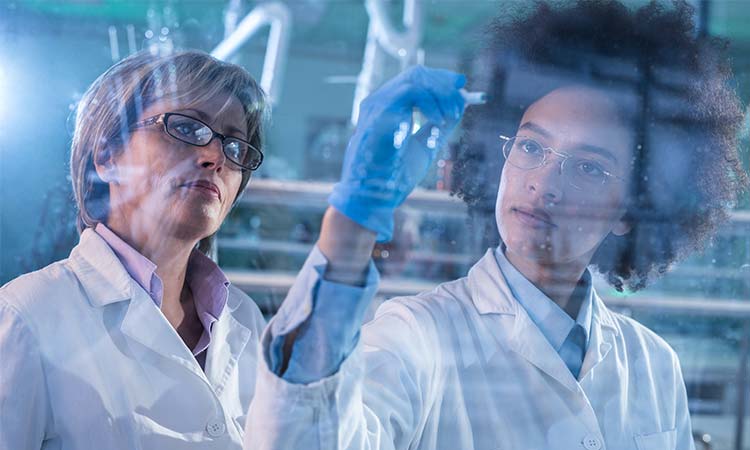Ohio State researchers enter federal cooperative agreement to develop radiation biodosimetry solutions

Researchers with The Ohio State University Comprehensive Cancer Center – Arthur G. James Cancer Hospital and Richard J. Solove Research Institute (OSUCCC – James) have entered a federal cooperative agreement, valued up to $9.42 million, that will help them further develop Ohio State's biodosimetry technology to discover noninvasive biomarkers for radiation exposure – work that will have national security applications.
Naduparambil Jacob of the OSUCCC – James serves as principal investigator of this research effort in partnership with the Intelligence Advanced Research Projects Activity (IARPA), an organization within the Office of the Director of National Intelligence.
The agreement aligns with the IARPA's stated mission to "push the boundaries of science to develop solutions that empower the intelligence community to do its work better and more efficiently for national security."
This new research cooperative agreement is organized through the IARPA's Targeted Evaluation of Ionizing Radiation Exposure (IARPA – TEI-REX) program and includes four prime awardees, with Jacob serving as principal investigator of the OSU led program, where Battelle Memorial Institute is a sub-awardee.
"This work is particularly important because of the possible major health consequences of radiation exposure, including cancer and other illnesses," said Jacob, an associate professor in the Department of Radiation Oncology at The Ohio State University College of Medicine and a member of the OSUCCC – James Translational Therapeutics Research Program.
"Being able to determine the amount and range of exposure would help clinicians more quickly and accurately mitigate the short- and long-term effects of cumulative radiation exposure," said Jacob.
Under Jacob's leadership, the OSUCCC – James team will work to develop rapid and accurate radiation biodosimetry solutions to human radiation exposure based on biomarkers that are detectable in skin and hair and that can be collected non-invasively.
The project expands upon ongoing efforts by OSUCCC – James scientists to develop blood biomarker-based mechanisms for early detection of acute radiation syndromes and delayed effects.
In 2020, Jacob and colleagues published data demonstrating the effectiveness of a novel miRNA-based biodosimetry test devised to quickly diagnose radiation sickness based on biomarkers measured through a single drop of blood. This test was selected by NASA to help develop space exploration capabilities under Project Polaris, an initiative designed to meet the challenges of sending humans back to the moon and to Mars.
Read the full article here.